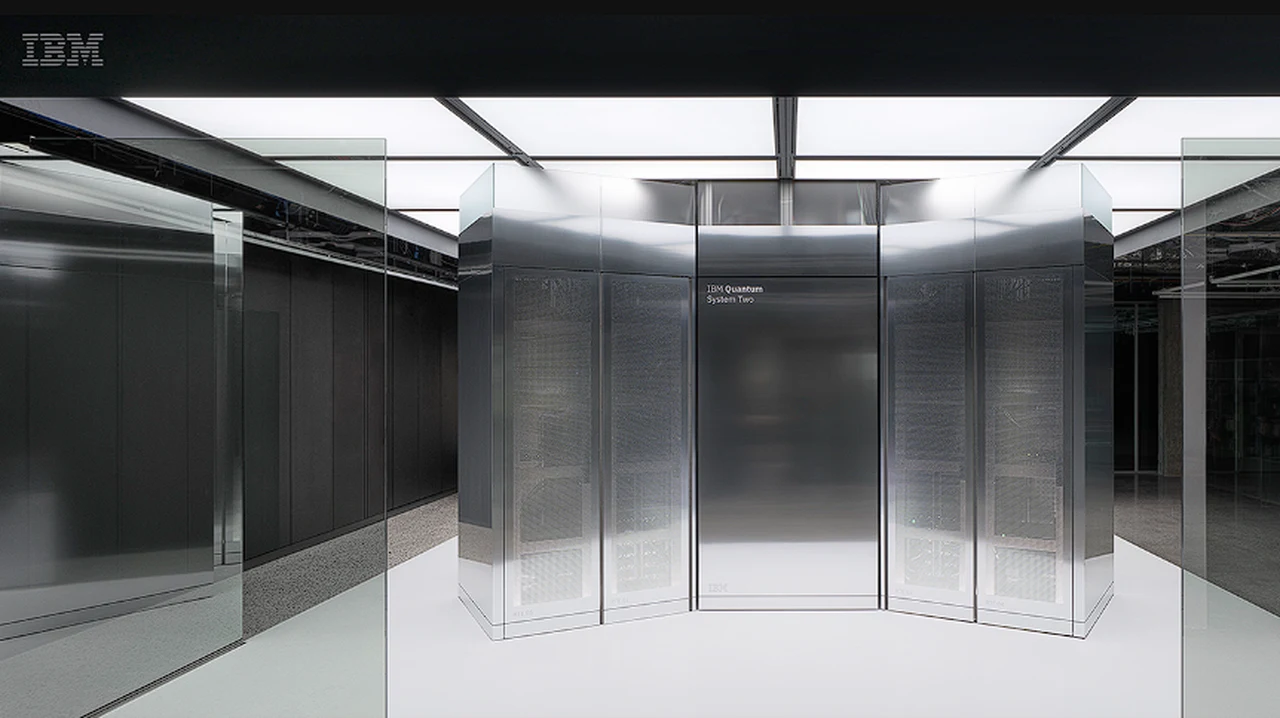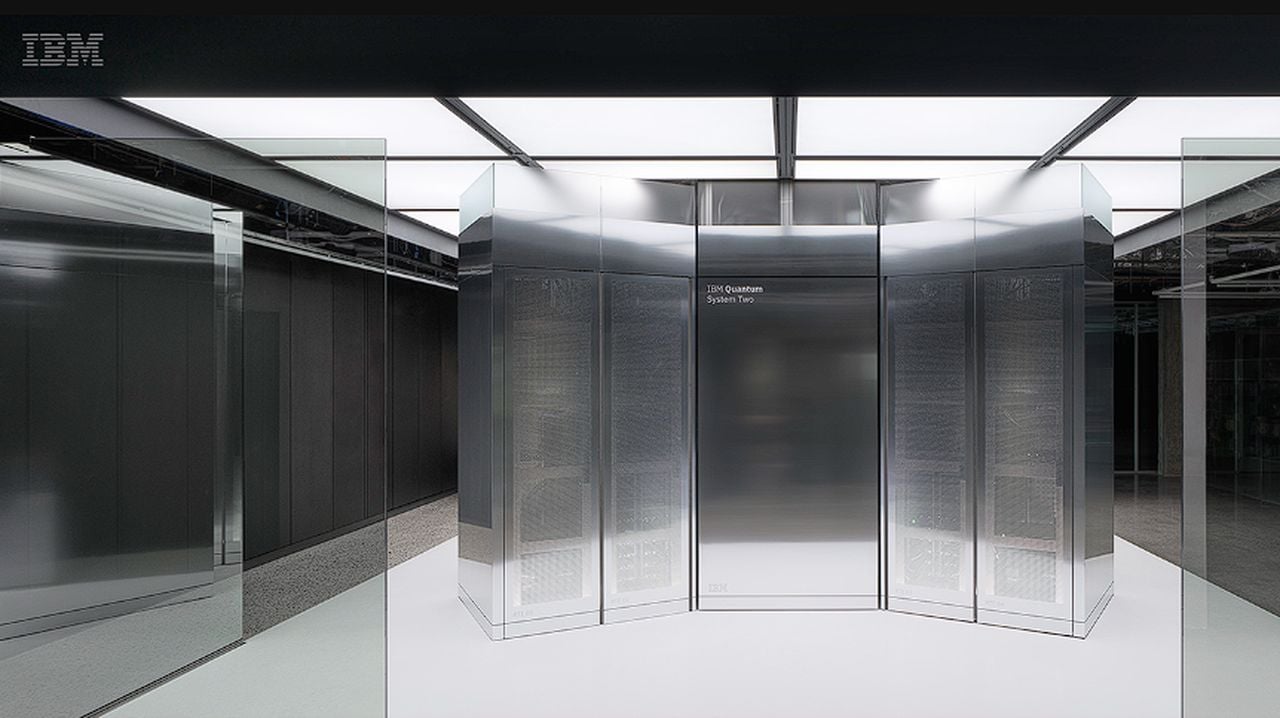
In the rapidly evolving world of quantum computing, IBM is making significant strides. Recently announcing that its latest quantum processor, the IBM Condor, which boasts 1,121 qubits, a significant increase from the previous 433-qubit chip. This development aligns with IBM’s projected quantum roadmap. Qubits, the fundamental units of quantum computers, enable significantly faster calculations than traditional computers when entangled. However, the sheer number of qubits is not the sole indicator of a quantum computer’s performance.
This cutting-edge field, once confined to theoretical research, is now seeing practical applications that could transform how we tackle complex problems. The IBM Quantum System Two, a new system that houses the Condor, is a marvel of engineering. Enclosed in a 15-foot structure, it operates in conditions that mimic the extreme cold of outer space. Initially, it will run on three 133-qubit Heron processors, but its design is future-proof, ready to integrate subsequent technological leaps.
IBM Quantum System Two computer
One of the most impressive features of the Quantum System Two is its modular architecture. This design is key to its ability to perform an astounding 100 million operations within a single quantum circuit. IBM isn’t stopping there; they have set their sights on scaling up to 1 billion operations by the year 2033.
To support the people who will develop the future of quantum computing, IBM has released Qiskit 1.0, a software development kit (SDK) that enhances the tools available to developers. This SDK makes it easier to compile quantum circuits with the help of artificial intelligence and introduces a batch mode that streamlines job execution. These improvements are designed to make the quantum computing workflow more user-friendly.
IBM is also focused on building a robust quantum computing ecosystem. They are doing this by developing resources like Qiskit Patterns and Quantum Serverless, which aid in the creation of algorithms and applications. Additionally, IBM is pioneering the integration of generative AI into quantum code programming through Watsonx, showcasing the synergy between artificial intelligence and quantum computing.
IBM Condor Qubit processor
At the forefront of this advancement is IBM’s latest creation, the IBM Condor, a powerful 1,121-qubit processor that is setting new benchmarks in computational capabilities. The IBM Condor’s large number of qubits is a clear indication of the progress IBM has made on their quantum computing roadmap. The power of a quantum computer comes from the entanglement of qubits, which allows for an exponential increase in computational capabilities. This means that quantum computers can address problems that are currently beyond the reach of classical computers.
Creating a quantum processor like the IBM Condor involves complex superconducting circuits that are etched onto silicon wafers. This is a crucial step in the advancement of quantum computing technology. However, it’s not just about having a large number of qubits. It’s also essential to achieve low error rates and maintain high fidelity in the operations of these qubits for them to be practically applied.
Although the qubit count of the IBM Condor is noteworthy, IBM has not yet shared detailed performance data for this new processor. The company has previously emphasized the importance of ‘quantum volume’ as a metric, which takes into account not only the number of qubits but also their quality, connectivity, and the error rates of operations. This metric has not been updated since 2020, leaving us waiting for more information on the processor’s capabilities.
1000 Qubits threshold crossed what does that mean?
The potential uses for the IBM Condor are still being explored. Experts in the field suggest that quantum computing will require millions of qubits to become commercially viable. This means that, despite the advancements the IBM Condor represents, there is still a long way to go before quantum computing can transform various industries. Here are some other articles you may find of interest on the subject of Quantum computing :
As we consider IBM’s latest development, it’s crucial to remember that the promise of quantum computing is not solely based on the number of qubits. It also includes the complexity of their interconnections and the accuracy with which they can be manipulated. The IBM Condor is a sign of the progress being made in quantum computing and signals the approach of a new era in this exciting field.
Quantum computing is an area of technology that has the potential to transform how we solve complex problems. Unlike traditional computers that use bits to process information, quantum computers use qubits, which can exist in multiple states simultaneously. This allows them to perform many calculations at once, providing a level of processing power that’s unattainable with current classical computers.
IBM’s unveiling of the IBM Condor quantum processor with 1,121 qubits is a testament to the rapid advancements in quantum technology. The IBM Condor represents a significant leap from IBM’s previous quantum processors and is a key milestone on their roadmap for the development of quantum computing.
The power of quantum computing lies in the ability of qubits to be entangled, which allows for an exponential increase in computational capabilities. This entanglement enables quantum computers to tackle problems that are currently unsolvable by traditional computers. The IBM Condor’s large number of qubits is a clear indication of the progress IBM has made in this area.
However, the number of qubits is not the only challenge in quantum computing. Achieving low error rates and maintaining high fidelity in qubit operations are also critical for the practical application of quantum processors. While the qubit count of the IBM Condor is impressive, IBM has yet to release detailed performance data for the processor. The company has previously highlighted ‘quantum volume’ as an important metric, which considers the number of qubits, their quality, connectivity, and the error rates of operations. This metric has not been updated since 2020, leaving us waiting for more information on the processor’s capabilities.
Looking ahead, IBM has laid out a comprehensive roadmap that extends to 2033. This plan includes a series of enhancements to their quantum computing systems, which will eventually feature processors with over 100 qubits. IBM is also forging partnerships with research institutions to explore quantum-powered applications.
IBM’s dedication to quantum computing is not just about technological prowess; it’s about providing enterprise solutions that are tailored to specific industries. As IBM’s quantum computing technology matures, it opens up possibilities for addressing some of the most challenging issues facing the world today. The advancements IBM is making today are paving the way for a future where quantum computing plays a pivotal role in solving complex problems and unlocking new opportunities.
Filed Under: Technology News, Top News
Latest timeswonderful Deals
Disclosure: Some of our articles include affiliate links. If you buy something through one of these links, timeswonderful may earn an affiliate commission. Learn about our Disclosure Policy.

